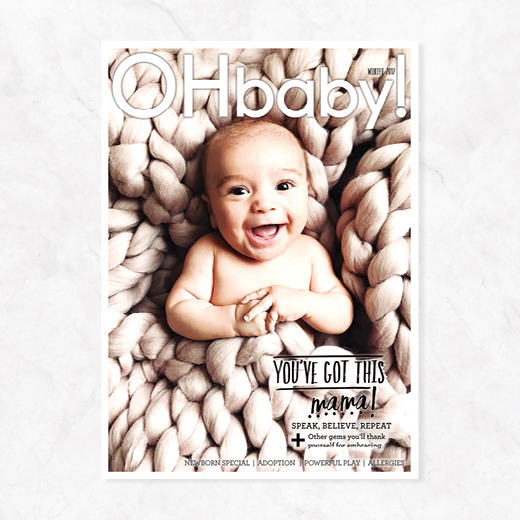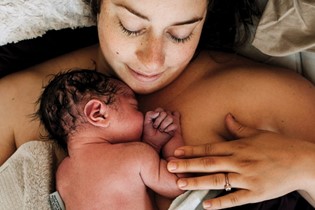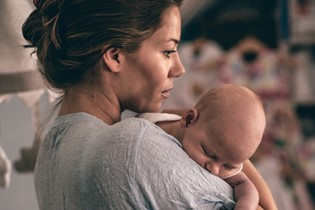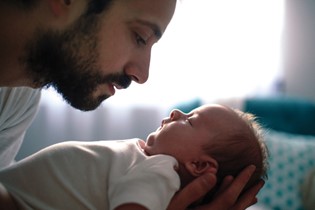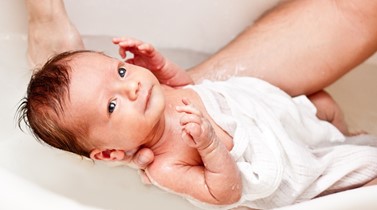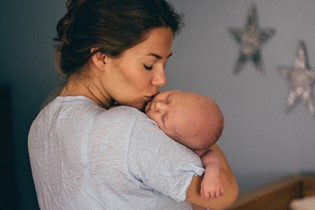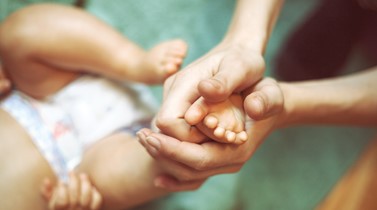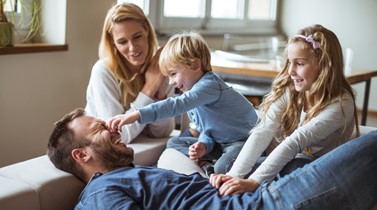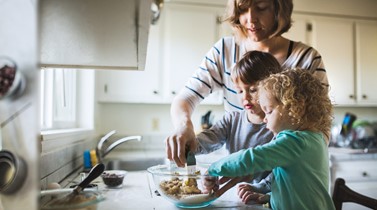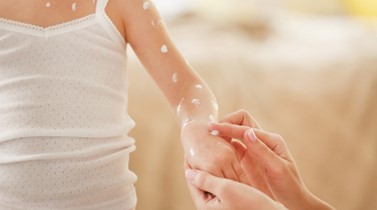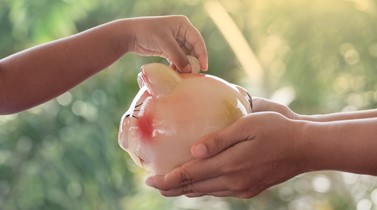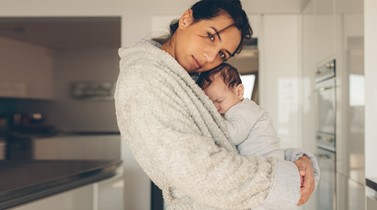Baby care 101: Bathing baby
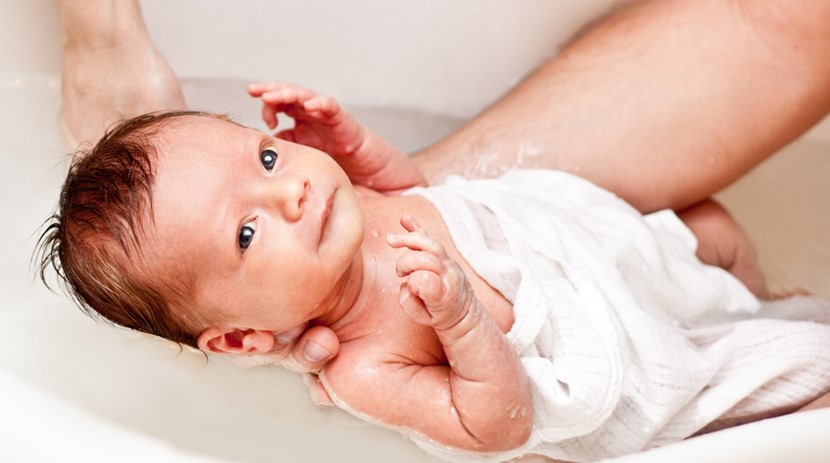
Bathing baby can be a lovely ritual and a key part of a relaxing evening routine in preparation for bed. In many households, bath time is Dad’s time, with fathers finding bath time to be a great opportunity to connect with their baby after being out at work most of the day.
While some new babies love being in the bath, others are not too impressed by it, and Dorothy Waide reminds us that very young babies can often get distressed at bath time because the whole process takes so long and, quite frankly, is exhausting. Dorothy notes that bathing a new baby should actually only take a few minutes - it takes longer to undress, dry and dress them again than it does for the actual bathing. Too long in the water can also dry out a baby’s delicate skin so save the longer baths for when they are toddlers - when the fun of splashing about can fully be appreciated.
For young babies, Dorothy also recommends washing their face and eyes before you place baby in the bath. Wet cotton pads are great for cleaning a baby’s delicate eye area, just use a fresh one for each eye.
Five tips for bath time:
1. Check the temperature first! Ideally with a thermometer, but if you haven’t got one, use your elbow. The water should feel warm, not hot. A good range is between 36 and 38°C.
2. Babies don’t actually need bath products, it’s up to you what you choose to use on your baby’s skin, but make sure everything you do want to use is within arm’s reach before you start.
3. Your non-dominant arm should be under the baby’s neck and shoulder region, so that baby’s head is resting on your wrist/lower forearm and your other hand slides under their lower body, supporting their buttocks as you lower them in. You can then use this hand for washing baby.
4. If baby is unsettled, place a warm flannel over their tummy for comfort and a sense of security. Babies often get upset in the bath because they have got tired. Remember to keep the actual bathing time short and efficient, just a few minutes. As baby gets older, the bath time routine can be extended to include more time in the water and you can linger over some massage and getting dressed. This time is really valuable for bonding.
5. Instead of rubbing, pat your baby dry, ensuring you get into the creases, and parcel them up in a cute hooded towel to keep them cosy.
Bath buddies
1. Check the temperature first! Ideally with a thermometer, but if you haven’t got one, use your elbow. The water should feel warm, not hot. A good range is between 36 and 38°C.
2. Babies don’t actually need bath products, it’s up to you what you choose to use on your baby’s skin, but make sure everything you do want to use is within arm’s reach before you start.
3. Your non-dominant arm should be under the baby’s neck and shoulder region, so that baby’s head is resting on your wrist/lower forearm and your other hand slides under their lower body, supporting their buttocks as you lower them in. You can then use this hand for washing baby.
4. If baby is unsettled, place a warm flannel over their tummy for comfort and a sense of security. Babies often get upset in the bath because they have got tired. Remember to keep the actual bathing time short and efficient, just a few minutes. As baby gets older, the bath time routine can be extended to include more time in the water and you can linger over some massage and getting dressed. This time is really valuable for bonding.
5. Instead of rubbing, pat your baby dry, ensuring you get into the creases, and parcel them up in a cute hooded towel to keep them cosy.

AS FEATURED IN ISSUE 38 OF OHbaby! MAGAZINE. CHECK OUT OTHER ARTICLES IN THIS ISSUE BELOW
